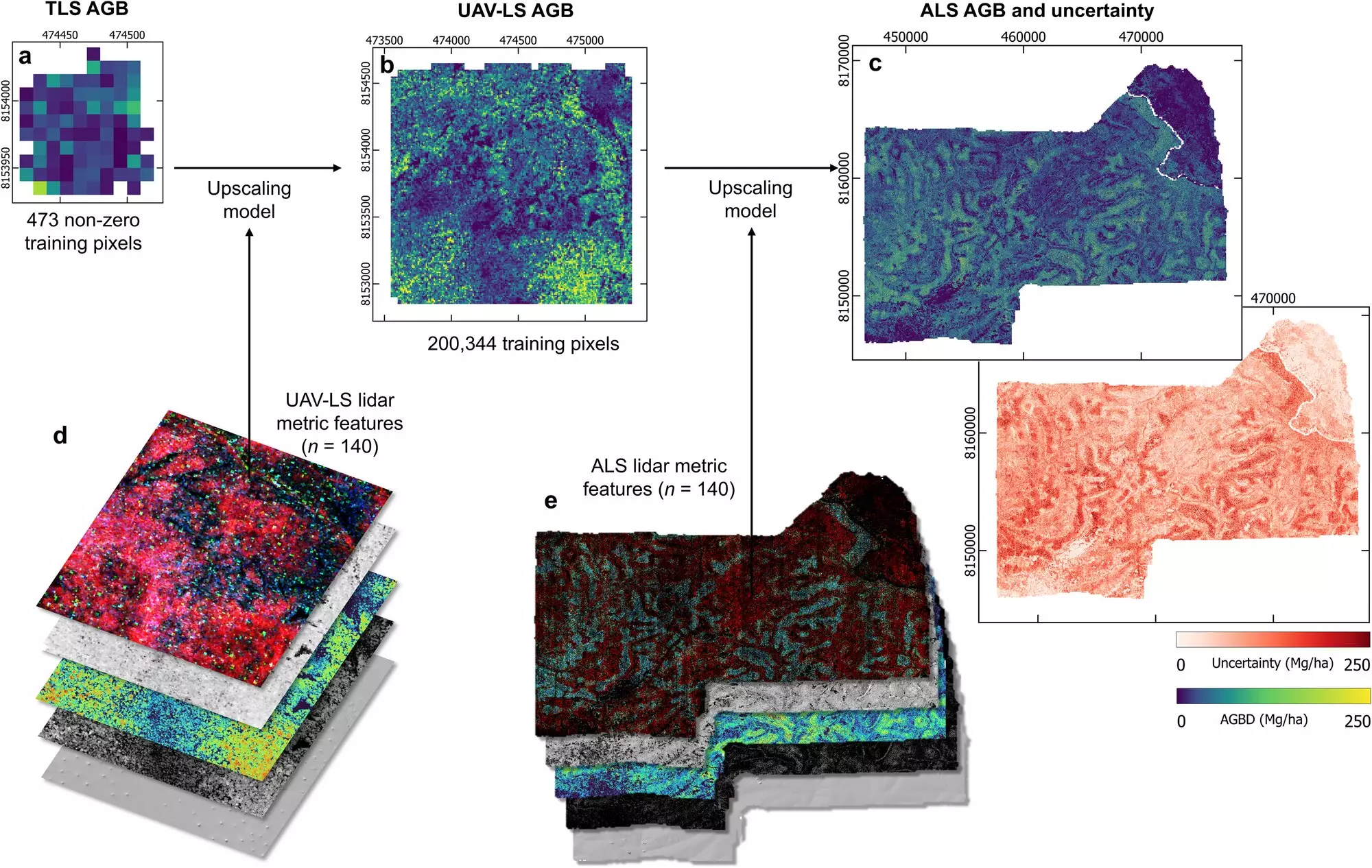Recent revelations about Mozambique’s miombo woodlands underscore a stark reality: the ecological and climatic importance of these forests has been drastically underestimated. A team of international scientists, led by carbon data provider Sylvera and including researchers from UCL, has conducted groundbreaking studies revealing that these ecosystems store 1.5 to 2.2 times more carbon than previously recognized by traditional measurement techniques. This new examination, published in *Communications Earth & Environment*, highlights an urgent need to adjust our understanding of natural carbon sinks.
The miombo woodlands, known for their unique design and diverse species, provide essential resources that not only enhance biodiversity but also sustain the livelihoods of millions across Sub-Saharan Africa. Their ability to capture carbon dioxide is paramount for climate regulation and maintaining local ecosystems. Yet, continuous deforestation over the last four decades has led to significant regional degradation, reducing these vital woodlands from an impressive 2.7 million square kilometers to 1.9 million square kilometers. This loss aggravates the climate crisis and necessitates immediate action to protect and restore these ecosystems.
Advanced Technologies Leading to Accurate Measurements
Key to this new understanding is the innovative use of 3D laser scanning technology. By integrating various data collection methods—including ground, drone, and helicopter-based laser scans—researchers amassed an impressive 450 billion measurements across more than eight million individual trees within the spans of the Gilé National Park. This area is not only ecologically rich but also extends eight times the dimensions of Manhattan.
The precision of these measurements contrasts sharply with conventional methods that rely on allometric equations linking easily measured tree attributes, like height and diameter, to biomass estimates. These older techniques often fall short in capturing the true biomass of larger trees, leading to a widespread underestimation of carbon stored in ecosystems like the miombo woodlands. The pioneering use of multi-scale lidar data provides a more nuanced and accurate picture, enabling scientists to estimate carbon stocks with newfound confidence.
Implications for Climate Mitigation Strategies
The ramifications of this enhanced understanding are profound. The study posits that miombo woodlands could potentially sequester an estimated 13.6 billion metric tons of carbon dioxide equivalents (Gt CO2e) more than previously predicted. This staggering figure raises crucial questions regarding the robustness of current climate mitigation strategies. If deforestation of these woodlands releases significantly higher amounts of carbon into the atmosphere than anticipated, we face an altered landscape in climate discussions.
Policymakers, businesses, and financial institutions must recognize the pivotal role that miombo woodlands play in global climate strategies. The implications call for greater investment in the sustainable management and restoration of these forests, shifting perceptions from viewing them as disposable resources to recognizing their critical role in combating climate change.
Investment in Natural Capital: A Financial Imperative
Allister Furey, CEO and Co-founder of Sylvera, emphasizes that addressing climate change fundamentally requires financial investment. For many, the complexities surrounding natural carbon sinks deter significant capital flow into conservation efforts. However, the advanced carbon measurement methodologies developed through this research hold potential to increase investor confidence dramatically. By demonstrating the real impact of forest restoration and the true costs of degradation, we can attract necessary funding to scale up nature-based solutions effectively.
This research signify a critical turning point—not only does it demonstrate the power of advanced technology in ecological assessment, but it also illuminates the pathway towards impactful climate finance solutions. With time running short in the fight against climate change, leveraging these insights could accelerate progress toward net-zero targets while enhancing the health of vital ecosystems.
Collaborative Efforts: A Global Challenge
The study represents a collective endeavor, involving multiple prestigious institutions and organizations, including the National Fund for Sustainable Development in Mozambique and The World Bank Group. It serves as a model for future interdisciplinary collaborations aimed at tackling the pressing challenges posed by climate change. By synchronizing efforts and data across borders, the potential to understand and protect critical natural resources, such as miombo woodlands, becomes significantly stronger.
As we reassess our ecological strategies and the underlying metrics that guide decision-making, the newly uncovered significance of Mozambique’s forests may provide an essential blueprint for conserving ecosystems worldwide. Emphasizing the role of data integrity in environmental policy, this study could inspire a paradigm shift and help usher in an era where we prioritize and safeguard our planet’s natural carbon sinks for generations to come.

